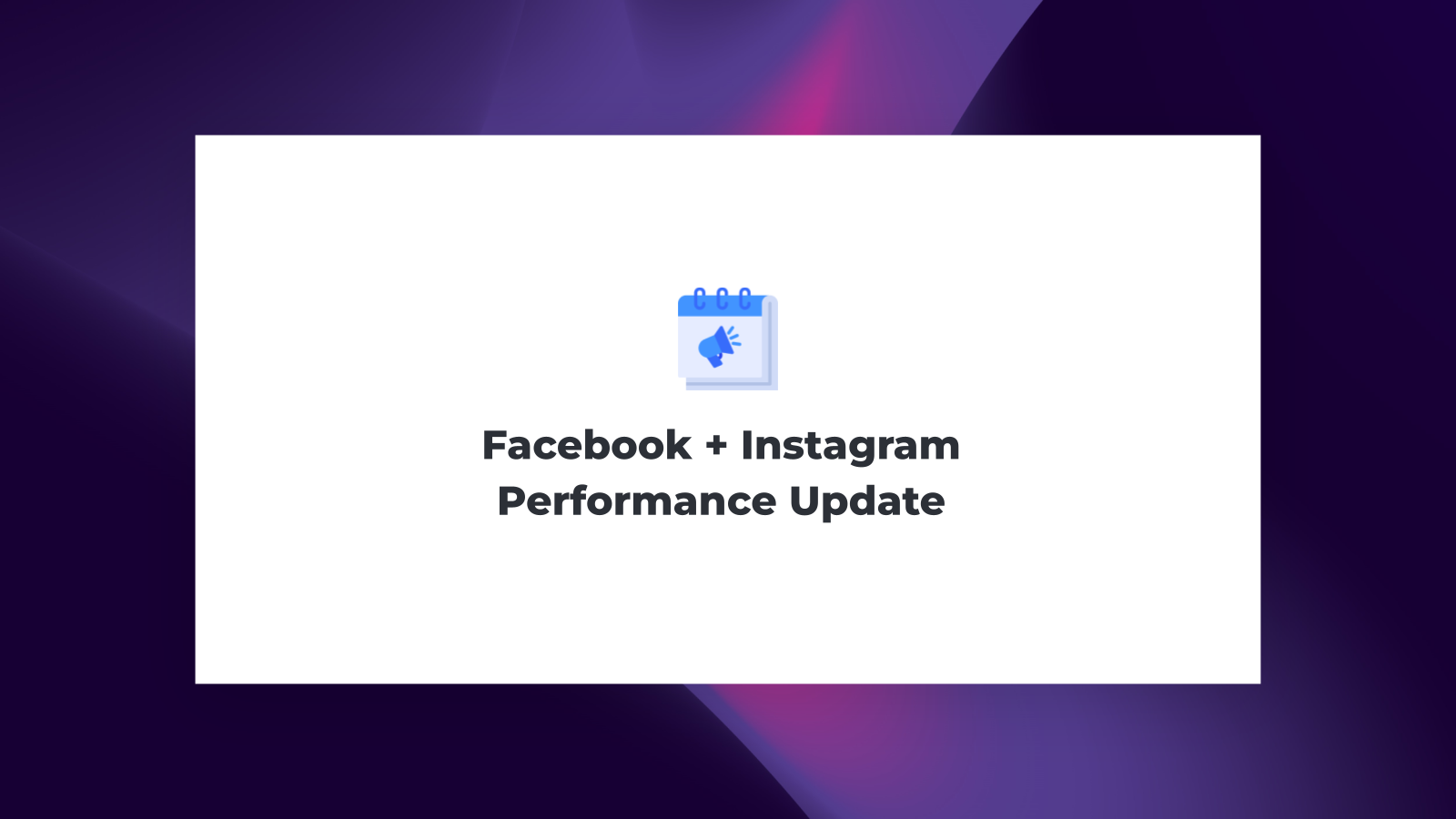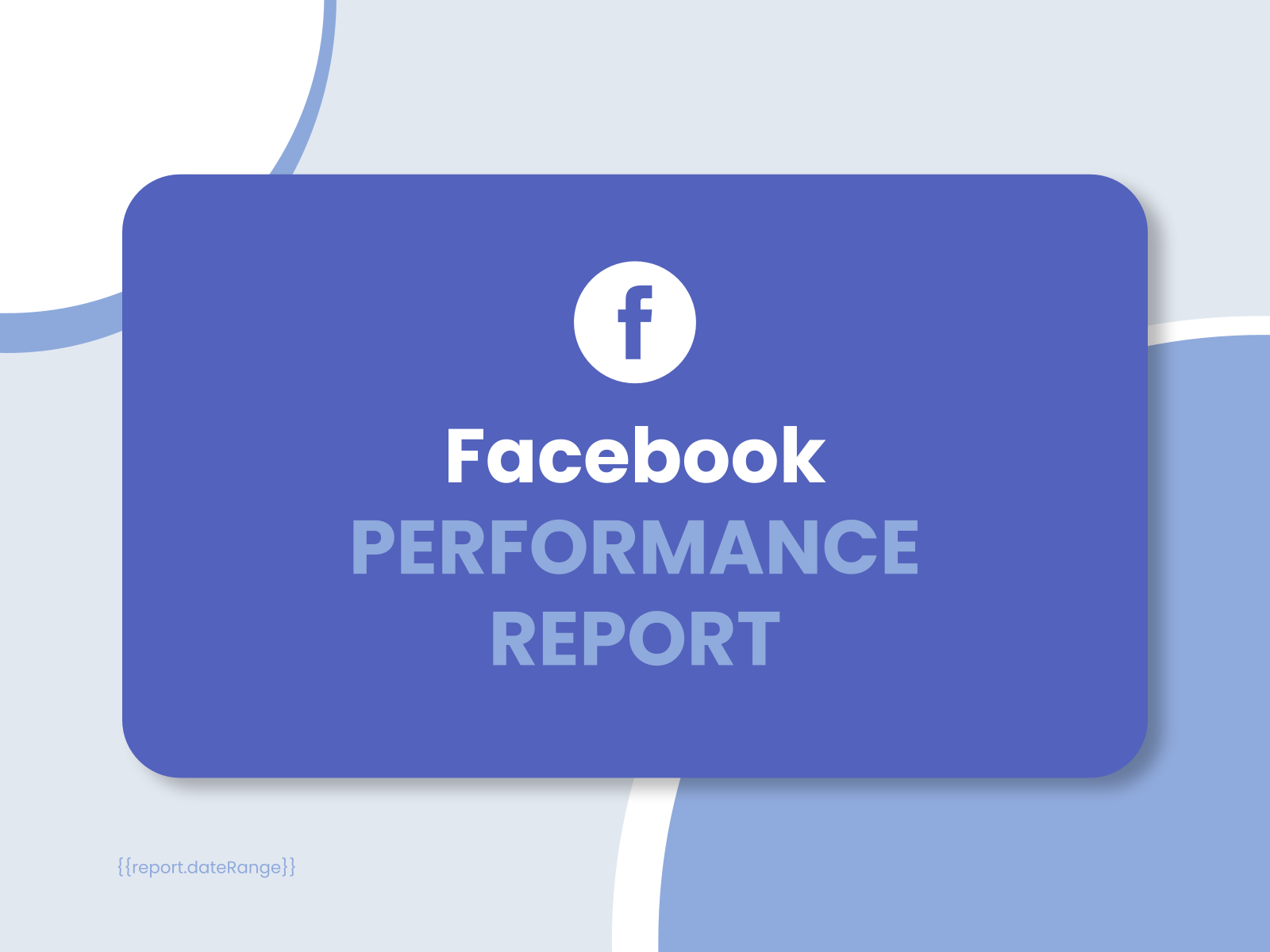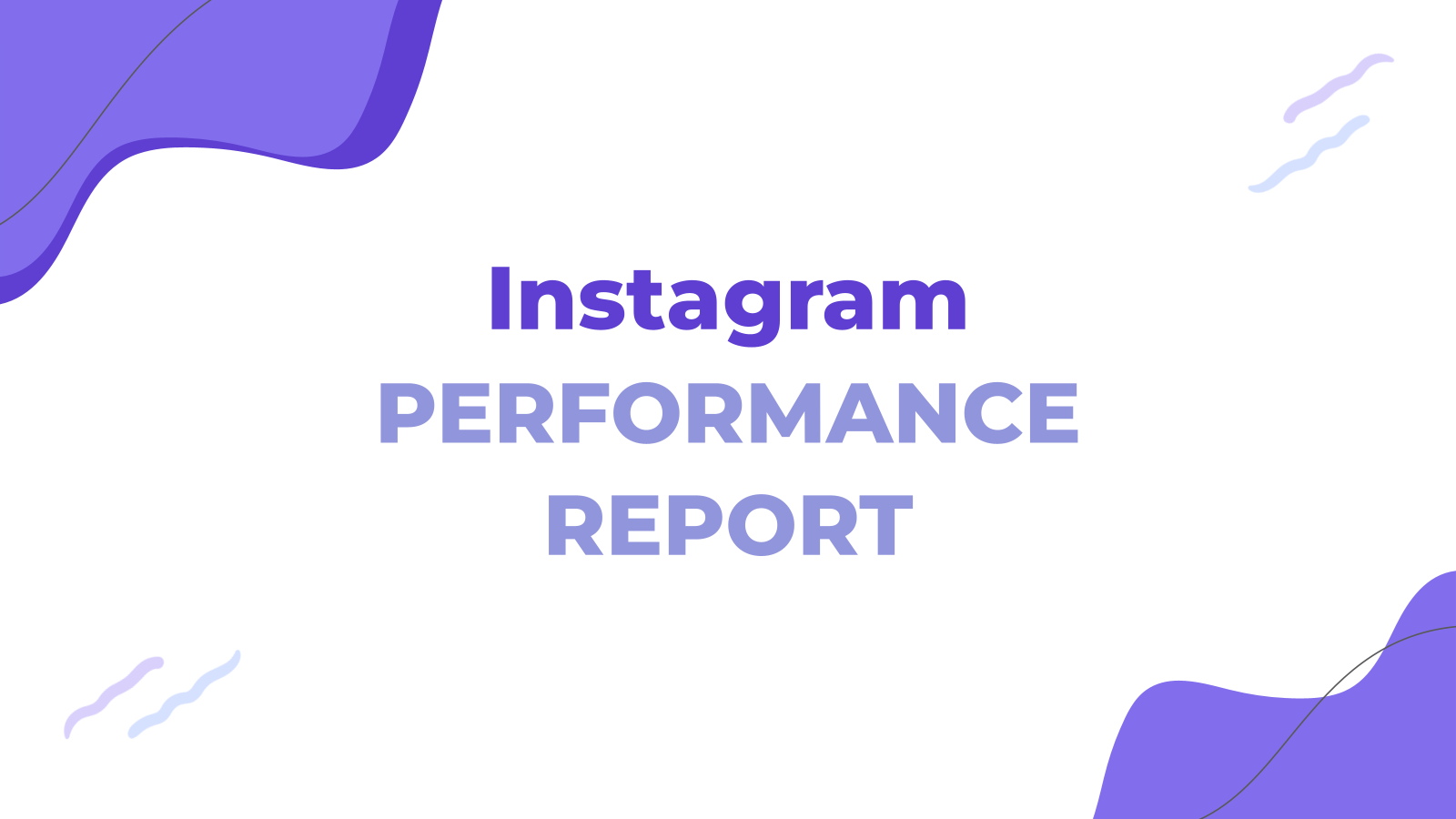Basic Facebook Report Template to Get Overview | ViewMetrics
Streamline your Facebook analysis with ViewMetrics' Basic Report Template. Obtain a clear overview of your performance metrics in just a few clicks.

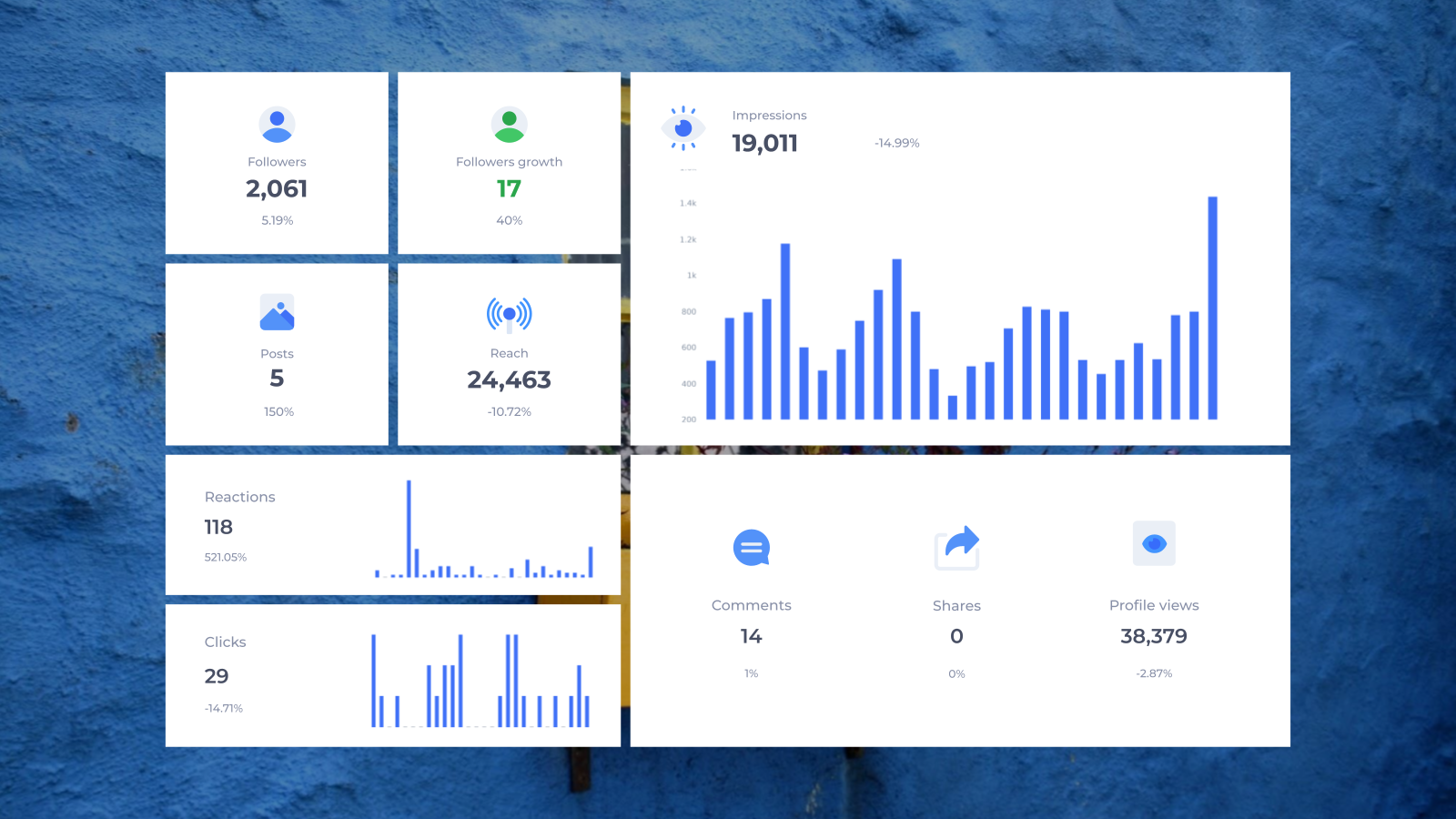
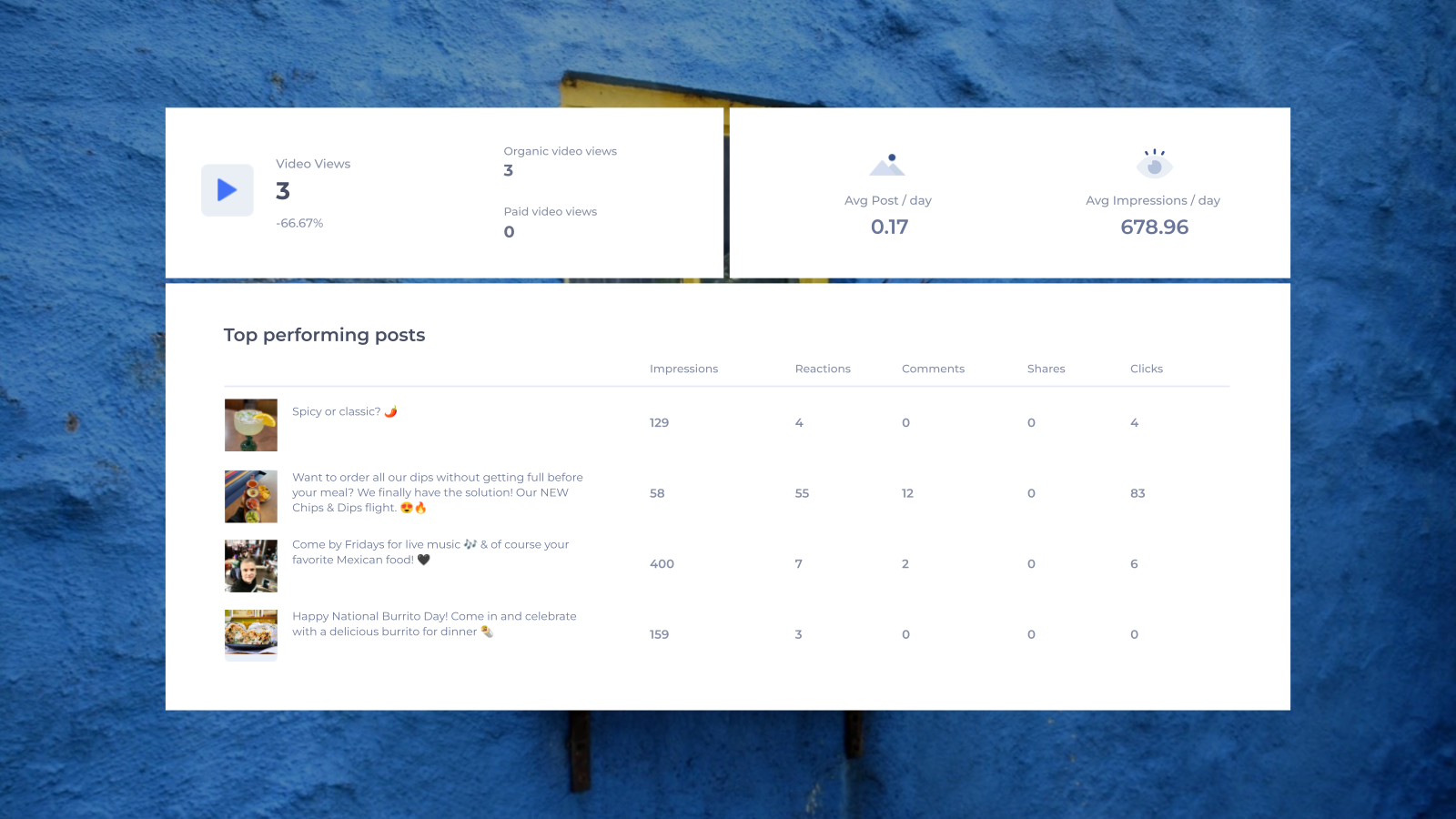

This basic Facebook report template is designed to provide a high-level overview of your Facebook account’s performance. It summarizes key metrics such as engagement rates, reach, impressions, and follower growth over a specific period. The report helps you track the effectiveness of your content, campaigns, and overall strategy, enabling you to identify what works well and areas that need improvement. By using this template, you can make data-driven decisions to optimize your Facebook presence and achieve your marketing goals more effectively.
Related Informational Resources:
- Facebook Post Tips to Drive Engagement
- Facebook Ads Do’s and Don’ts
- Social Media Platforms for Marketing Success
- Best Practices for Facebook A/B Testing
FAQs Related to Basic Facebook Report Template
Why do I need a Basic Facebook Report Template?
What is the difference between a Basic and an Advanced Facebook Report?
Where can I find a ready-made Basic Facebook Report Template?
How do I analyze my Facebook Report effectively?
- Compare current data with past performance.
- Identify trends in audience engagement.
- Adjust content strategy based on top-performing posts.
- Monitor ad spend efficiency if running paid campaigns.
What should be included in a Basic Facebook Report Template?
A basic Facebook Report Template should include:
- Overview of page performance.
- Audience insights (demographics, location, age, gender).
- Engagement metrics (likes, shares, comments).
- Post performance (top-performing posts).
- Reach and impressions.
- Click-through rate (CTR) if applicable.
Frequently asked questions
Save time by auto-inserting metrics, charts, and screenshots into templates.
Get Started for Free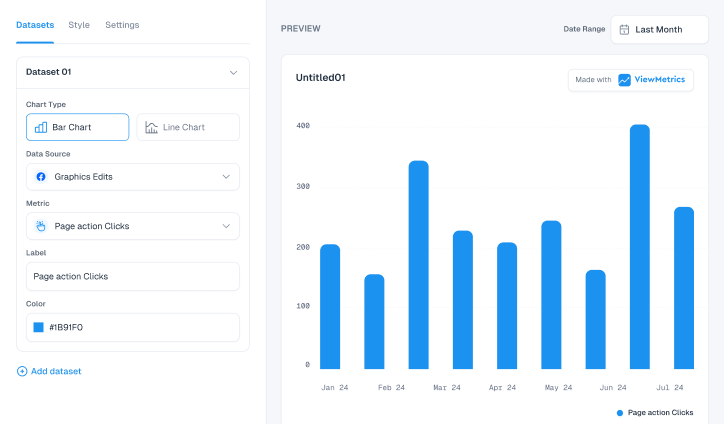
Design That Stands Out
Elevate visuals effortlessly with customizable styling options tailored to match brand aesthetics.
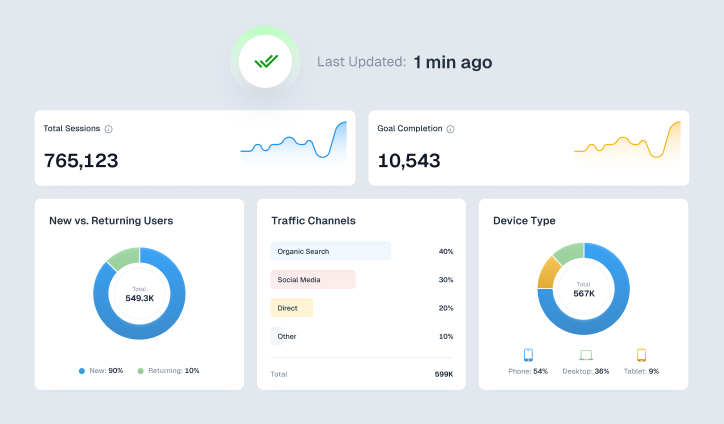
Effortless Data Syncing
Keep insights up-to-date with seamless and flexible data synchronization across platforms.
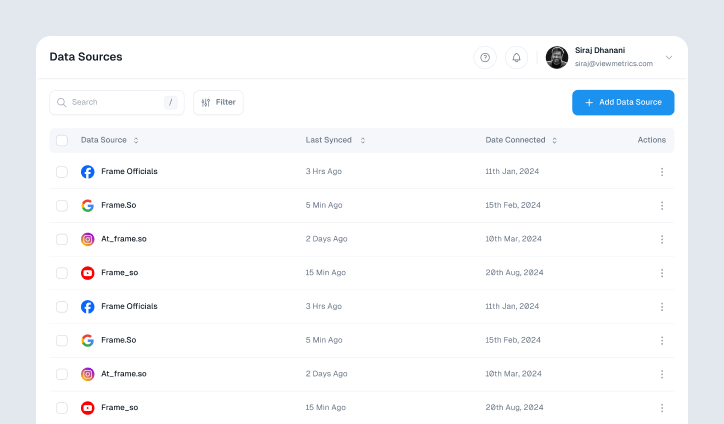
Connect with Ease
Integrate effortlessly with leading platforms to streamline workflows and maximize efficiency.
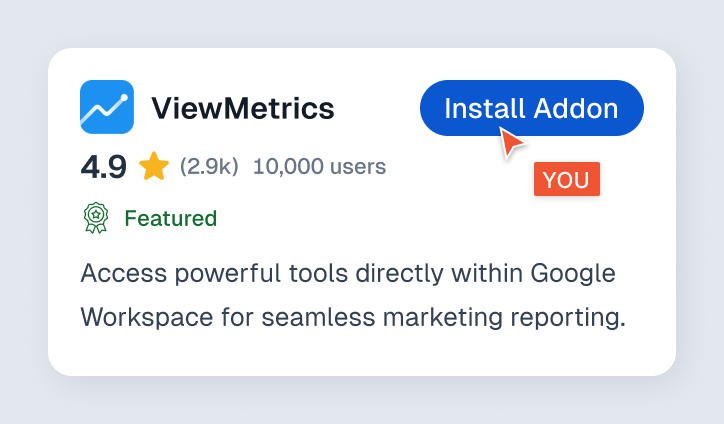
Boost Productivity with Google Add-On
Access powerful tools directly within Google Workspace for seamless marketing reporting.
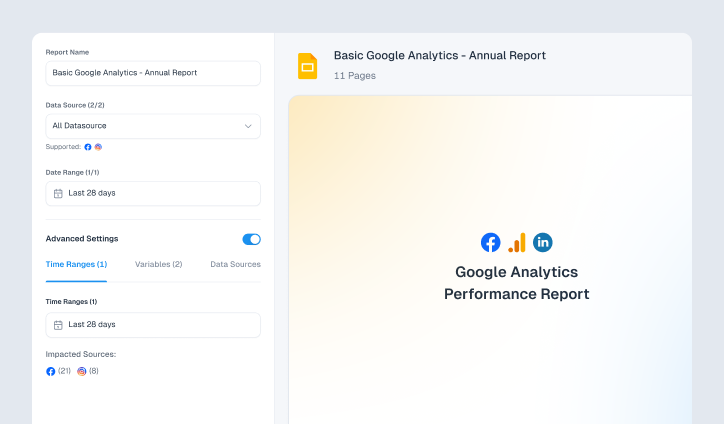
Custom Reports, Instant Insights
Generate tailored marketing reports effortlessly, delivering key insights in just a few clicks.
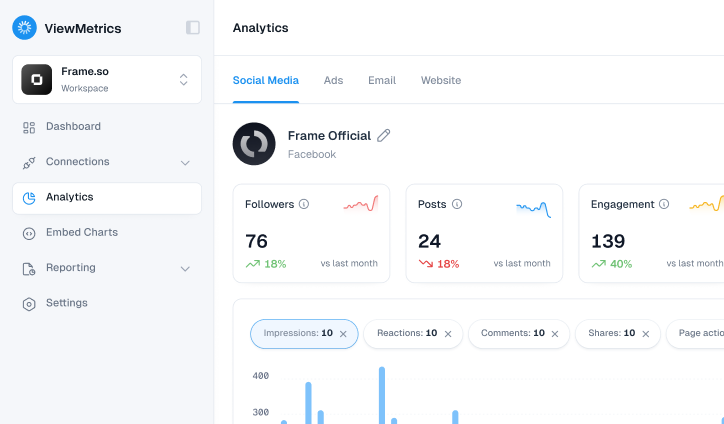
Actionable Analytics at a Glance
Access in-depth analytics to uncover trends, optimize strategies, and drive impactful decisions.
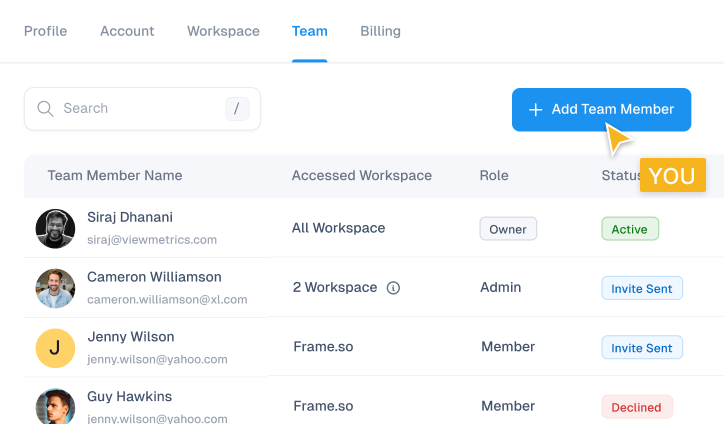
Collaborate with Ease
Invite team members to share insights, streamline workflows, and work together seamlessly.

Design That Stands Out
Elevate visuals effortlessly with customizable styling options tailored to match brand aesthetics.

Effortless Data Syncing
Keep insights up-to-date with seamless and flexible data synchronization across platforms.

Connect with Ease
Integrate effortlessly with leading platforms to streamline workflows and maximize efficiency.

Boost Productivity with Google Add-On
Access powerful tools directly within Google Workspace for seamless marketing reporting.

Custom Reports, Instant Insights
Generate tailored marketing reports effortlessly, delivering key insights in just a few clicks.

Actionable Analytics at a Glance
Access in-depth analytics to uncover trends, optimize strategies, and drive impactful decisions.

Collaborate with Ease
Invite team members to share insights, streamline workflows, and work together seamlessly.

Design That Stands Out
Elevate visuals effortlessly with customizable styling options tailored to match brand aesthetics.

Effortless Data Syncing
Keep insights up-to-date with seamless and flexible data synchronization across platforms.

Connect with Ease
Integrate effortlessly with leading platforms to streamline workflows and maximize efficiency.

Boost Productivity with Google Add-On
Access powerful tools directly within Google Workspace for seamless marketing reporting.

Custom Reports, Instant Insights
Generate tailored marketing reports effortlessly, delivering key insights in just a few clicks.

Actionable Analytics at a Glance
Access in-depth analytics to uncover trends, optimize strategies, and drive impactful decisions.

Collaborate with Ease
Invite team members to share insights, streamline workflows, and work together seamlessly.
